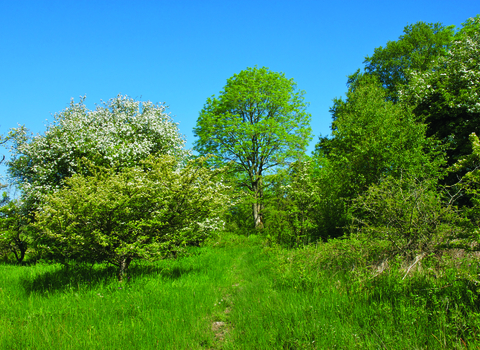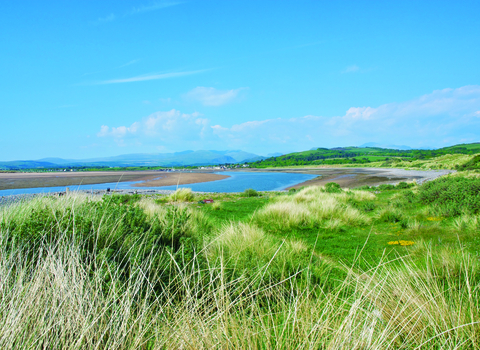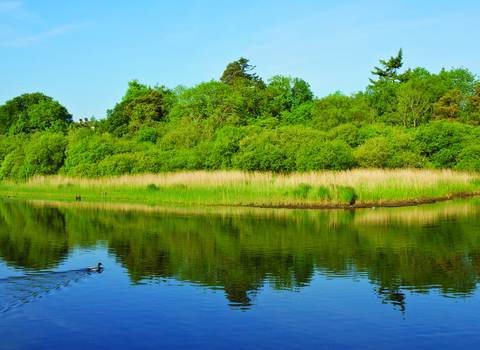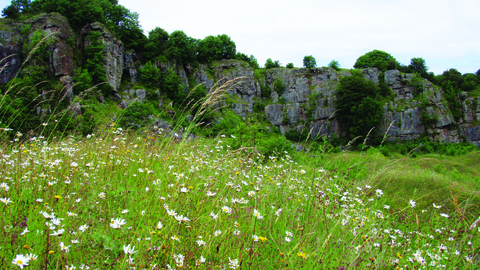
Clints Quarry has a rich industrial history and is home to an abundance of wildflowers and grasses, as well as woodland © Cumbria Wildlife Trust
Location
OS Map Reference
1:50,000. Sheet no. 89Grid reference: NY 008 124
Getting here
By car:
Clints Quarry lies 1.6km/1 mile north of Egremont. Take the A5086 towards Cleator Moor then the first left signed for Moor Row. Parking is in a layby on the right just after the junction or 100m further on opposite the reserve entrance.
By bicycle:
The reserve is on National Route 72 Hadrian’s Cycleway.
By public transport:
Buses run from Whitehaven to Egremont.
View on What3Words
Know before you go
Dogs
When to visit
Opening times
Open all year roundBest time to visit
April to AugustAbout the reserve
Wildlife highlights
- The abundance of flowers and grasses attract gatekeeper, ringlet, common blue, orange-tip and meadow brown butterflies in the summer
- Discover ponds that are home to palmate newts, sticklebacks, pond snails, frogs and toads, as well as several species of dragonfly
- Look for treecreepers and long-tailed tits in the woodland
All year round explore the industrial past and the geology.
What makes Clints Quarry so special?
Clints Quarry is a fascinating place not only for wildlife, but for the geology and industrial archaeology, which is still noticeable across the nature reserve.
Now a haven for wildflowers
Damp conditions between the spoil heaps are ideal for northern marsh and common spotted orchid, whilst the drier slopes of the heaps have been colonised by wild strawberry, oxeye daisy, mouse-ear-hawkweed, carline thistle, rough hawkbit and pyramidal orchid. Bee orchids are also found here at one of the most northerly sites in England.
Sheltered habitat for butterflies
This sheltered quarry, with its profusion of flowers and grasses, provides an ideal habitat for butterflies.
Throughout the summer on sunny days you can find common blue butterflies, orange tip, gatekeeper, ringlet, and meadow brown butterflies.
Around the ponds
There are four ponds on the nature reserve and frogs and toads breed here. You can also find palmate newt, stickleback and pond snails.
Keeping it special
Scrub and trees are becoming established in the quarry and we have ongoing work to maintain the open nature of the site and the species-rich grassland.
Rabbits have helped maintain the grassland in the past but their numbers have declined more recently.
The eastern part of the nature reserve is already wooded providing habitat for a range of typical woodland birds.
Industrial history
In the 1600s the Carboniferous limestone rock was used for building and agriculture, and more recently in the local steel-making industry until quarrying finally ceased in 1930.
Recent history
Clints Quarry nature reserve was purchased from British Steel and Lord Egremont in 1984.
Species
Habitat
Contact us
Environmental designation
Take a virtual tour of Clints Quarry Nature Reserve
Upcoming events at Clints Quarry Nature Reserve
If there are any upcoming events at Clints Quarry Nature Reserve we'll show them to you below.
Did you know?
A striking and sneaky mimic, the bee orchid's velvety flower lip looks like a female bee. The plant has evolved to attract male bees and pollinate the flower.
Explore Clints Quarry Nature Reserve with our Audio Trail
Track 1: Introduction
Track 2: Grassland
Track 3: Pools
Track 4: Spoil heaps
Track 5: The quarry face
Track 6: Woodland
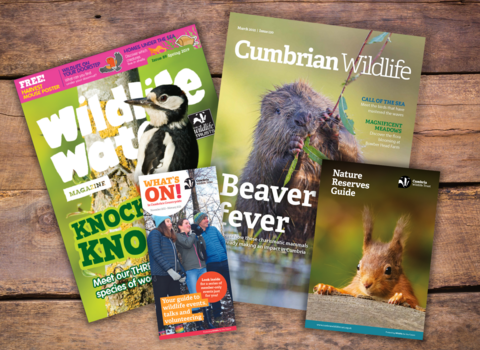
Support our conservation work on this nature reserve,
and protect Cumbria's wildlife & wild places.





